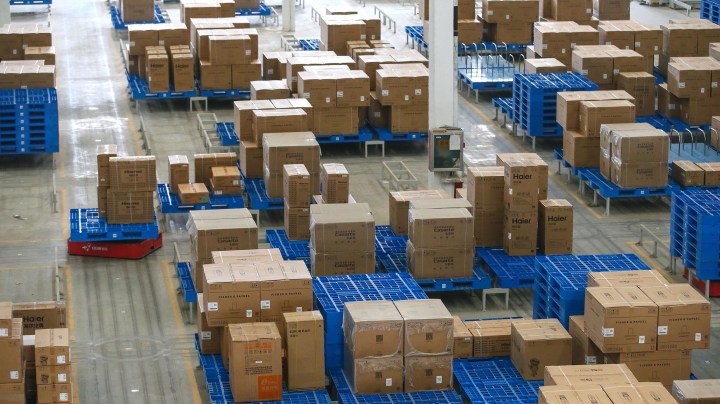
How much money are supply chain disruptions costing companies?
How much money are supply chain disruptions costing companies?

What’s it like for a supply chain in 2020? Cyberattacks, trade disputes, the coronavirus, natural disasters — it is exceedingly difficult to manage a complex web of business relationships around the globe when strands keep falling out.
Research out Thursday from the McKinsey Global Institue describes the costs of all this. Susan Lund, a partner with McKinsey, spoke with Marketplace’s Sabri Ben-Achour, and the following is an edited transcript of their conversation.
Sabri Ben-Achour: Can we attach a dollar value to all of these disruptions to supply chains around the world?
Susan Lund: We can. So, in our new research, we’ve been able to look at the rising frequency of supply chain disruptions and then when it costs companies. So, on average, companies can expect to lose half of a year’s profits over the course of a decade. You know, you might say, well, that doesn’t sound like so much. But companies worry over every percentage point drop in [earnings before interest, taxes, depreciation, and amortization], and the market pummels them. So that’s a huge loss. And in an event like COVID, of course, the damage is much more extreme.
Ben-Achour: How do you make a supply chain more resilient to a shock like COVID?
Lund: Well, having a more diverse set of suppliers is one way, and that’s where the shifting to different countries comes in. But there are lots of other ways and things that companies can do. Probably the most important thing is to digitize their supply chain and get transparency, not only on who their direct suppliers are, but going through all of the tiers of the supply chain. Then companies can also do things like hold more inventory. They can design products to have less complex and unique parts that simplify the supply chain. There’s a whole set of actions that companies can undertake, and each one will have to decide which ones make sense for their business.
There’s a lot happening in the world. Through it all, Marketplace is here for you.
You rely on Marketplace to break down the world’s events and tell you how it affects you in a fact-based, approachable way. We rely on your financial support to keep making that possible.
Your donation today powers the independent journalism that you rely on. For just $5/month, you can help sustain Marketplace so we can keep reporting on the things that matter to you.











